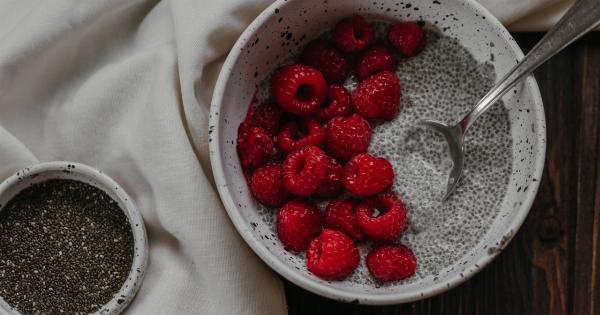Everyone knows that eating fruits and vegetables is crucial for good health. They are loaded with vitamins, minerals, antioxidants, and numerous other nutrients that our bodies need to function properly. However, most people don’t eat enough of them.
In fact, studies show that only about one in ten Americans get the recommended servings of fruits and vegetables per day. So, how many servings exactly should we aim for?.
How Many Servings of Fruits and Vegetables Should You Eat?
The ideal number of fruit and vegetable servings varies depending on age, sex, weight, and physical activity level.
However, the general rule of thumb is to consume at least five servings per day, with each serving being about a half-cup of cooked or raw fruits or vegetables. This recommendation comes from the USDA’s Dietary Guidelines for Americans, and is based on numerous studies that have shown the health benefits of a diet rich in plant-based foods.
Why Seven is Better than Five
While the five servings guideline is a great start, research shows that aiming for seven is even better.
One study from the Harvard School of Public Health found that people who ate seven or more servings of fruits and vegetables per day had a 42% lower risk of death from all causes compared to those who consumed less than one serving per day. Another study from University College London found that people who ate seven or more servings per day had a 33% lower risk of heart disease and stroke than those who ate fewer than one daily serving.
What Counts as a Serving of Fruits and Vegetables?
If you’re curious about what counts as a serving of fruits and vegetables, here are some examples:.
- 1 medium-sized apple, banana, orange, or pear
- 1/2 cup of cooked or canned vegetables (such as broccoli, carrots, or green beans)
- 1 cup of raw leafy greens (such as spinach, kale, or lettuce)
- 1/2 cup of fresh fruit (such as berries, melon, or pineapple)
- 1/4 cup of dried fruit (such as raisins or cranberries)
- 1/2 cup of fruit juice (100% juice, without added sugar)
The Benefits of Eating Seven Servings of Fruits and Vegetables
Why is eating seven servings of fruits and vegetables better than just five? Here are some of the benefits:.
1. Lower Risk of Chronic Diseases
Eating seven servings of fruits and vegetables per day has been linked to a lower risk of chronic diseases such as heart disease, stroke, cancer, and diabetes.
This is because these foods are packed with antioxidants, fiber, and other key nutrients that help protect the body from damage and inflammation.
2. Better Nutrient Absorption
If you eat a variety of fruits and vegetables throughout the day, you’ll be giving your body a wide range of essential nutrients.
Additionally, the fiber in these foods helps slow down the absorption of carbohydrates, which can help regulate blood sugar levels and prevent insulin spikes.
3. Improved Digestion
The fiber in fruits and vegetables also helps keep the digestive system running smoothly. It can help prevent constipation, bloating, and other digestive issues.
4. Weight Management
Eating a diet that is rich in fruits and vegetables can help with weight management, since these foods are low in calories and high in fiber. They can help you feel full and satisfied, without overeating on empty calories.
How to Eat Seven Servings of Fruits and Vegetables
If you’re wondering how to fit seven servings of fruits and vegetables into your daily diet, here are some tips:.
- Make sure at least half of your plate is filled with fruits and vegetables at each meal.
- Snack on fruits and vegetables throughout the day instead of processed snacks.
- Add fruits and vegetables to smoothies, salads, and soups.
- Use fruits and vegetables as a substitute for high-calorie ingredients in recipes (for example, use zucchini noodles instead of pasta).
- Experiment with new fruits and vegetables to keep it interesting.
The Bottom Line
Aim for seven servings of fruits and vegetables per day to reap the maximum health benefits. Eating a plant-based diet can help reduce the risk of chronic diseases, improve digestion, and aid in weight management.
By incorporating a variety of fruits and vegetables into your daily meals and snacks, you’ll be giving your body the nutrients it craves.






























